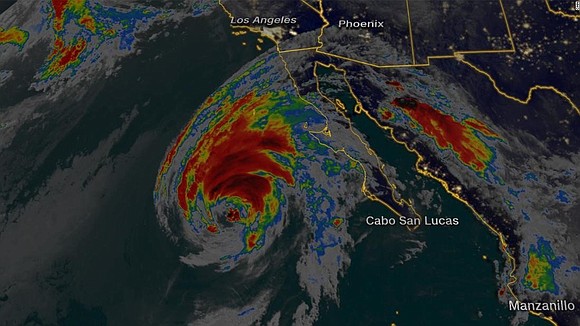Rosa threatens 9 million people with flooding, even in the desert Southwest
CNN/Stylemagazine.com Newswire | 10/2/2018, 8:59 a.m.

By Holly Yan, CNN
(CNN) -- Millions of people unaccustomed to heavy rain will get walloped by Tropical Depression Rosa on Tuesday.
The storm is already dumping torrential rainfall on Baja California in Mexico, where it's expected to leave up to 6 to 10 inches of rain, the National Hurricane Center said.
By Tuesday afternoon, Rosa will head toward the deserts of Arizona.
"Rainfall will be heaviest today and tonight into Arizona," CNN meteorologist Dave Hennen said Tuesday. "Flash flood watches cover nearly 9 million, including Phoenix north to Salt Lake City."
As Rosa trudges northeast, the storm will dump 2 to 4 inches of rain on much of Arizona and up to 6 inches in the mountains.
And given Arizona's terrain, heavy rainfall poses an unusual set of problems. The National Weather Service's office in Flagstaff warned residents to avoid the state's famous slot canyons and any campsite near creeks.
Forecasters there stressed that "just because it's not raining where you are doesn't mean it won't flood."
Bracing for 'life-threatening flash flooding'
Rosa's deluge "may produce life-threatening flash flooding," the hurricane center said. "Dangerous debris flows and landslides are also possible in mountainous terrain."
Historically, it's unusual for the US Southwest to get pummeled by a hurricane or tropical storm. But "these events have begun to increase in recent years," CNN meteorologist Gene Norman said.
Research indicates global warming contributes to tropical storms getting "more intense, bigger and longer-lasting, thereby increasing their potential for damage," said Kevin Trenberth, senior scientist at the National Center for Atmospheric Research.
While there might not be a direct link between global warming and the recent increase of severe storms in the Southwest, "it is possible that this could be a side effect of climate change," Norman said.
"Warmer oceans are allowing eastern Pacific storms to reach higher latitudes," he said. "This was not the case earlier. It was quite rare for an eastern Pacific storm to even reach Baja California, and this is now becoming more common."



